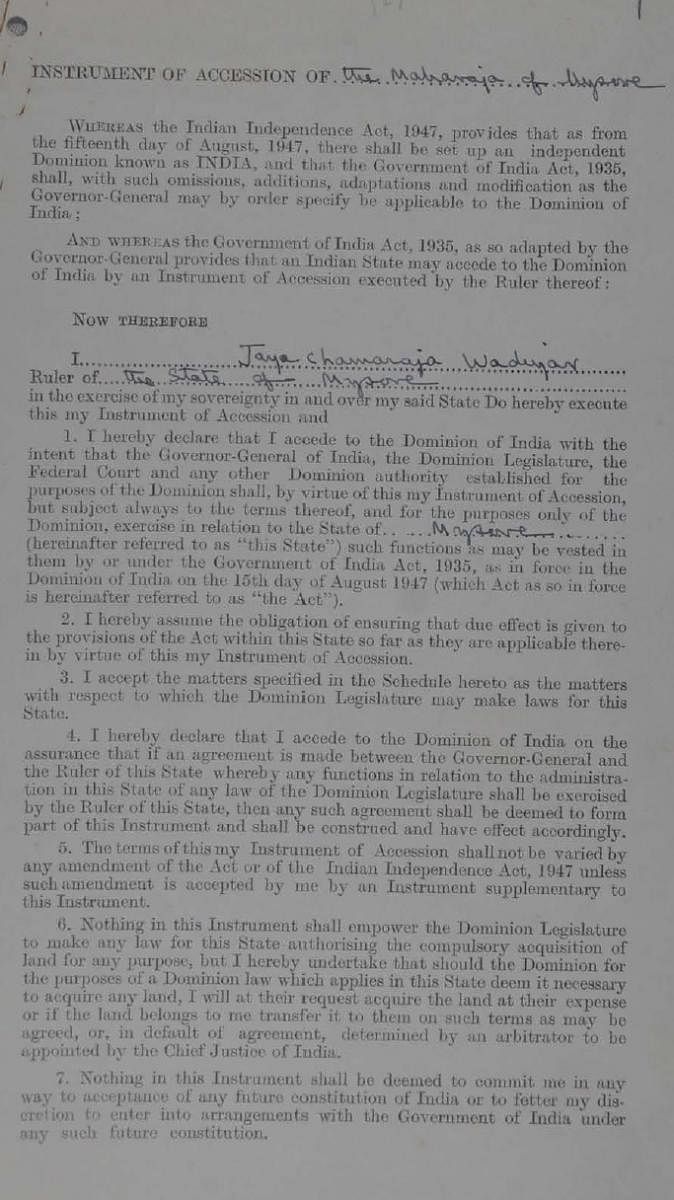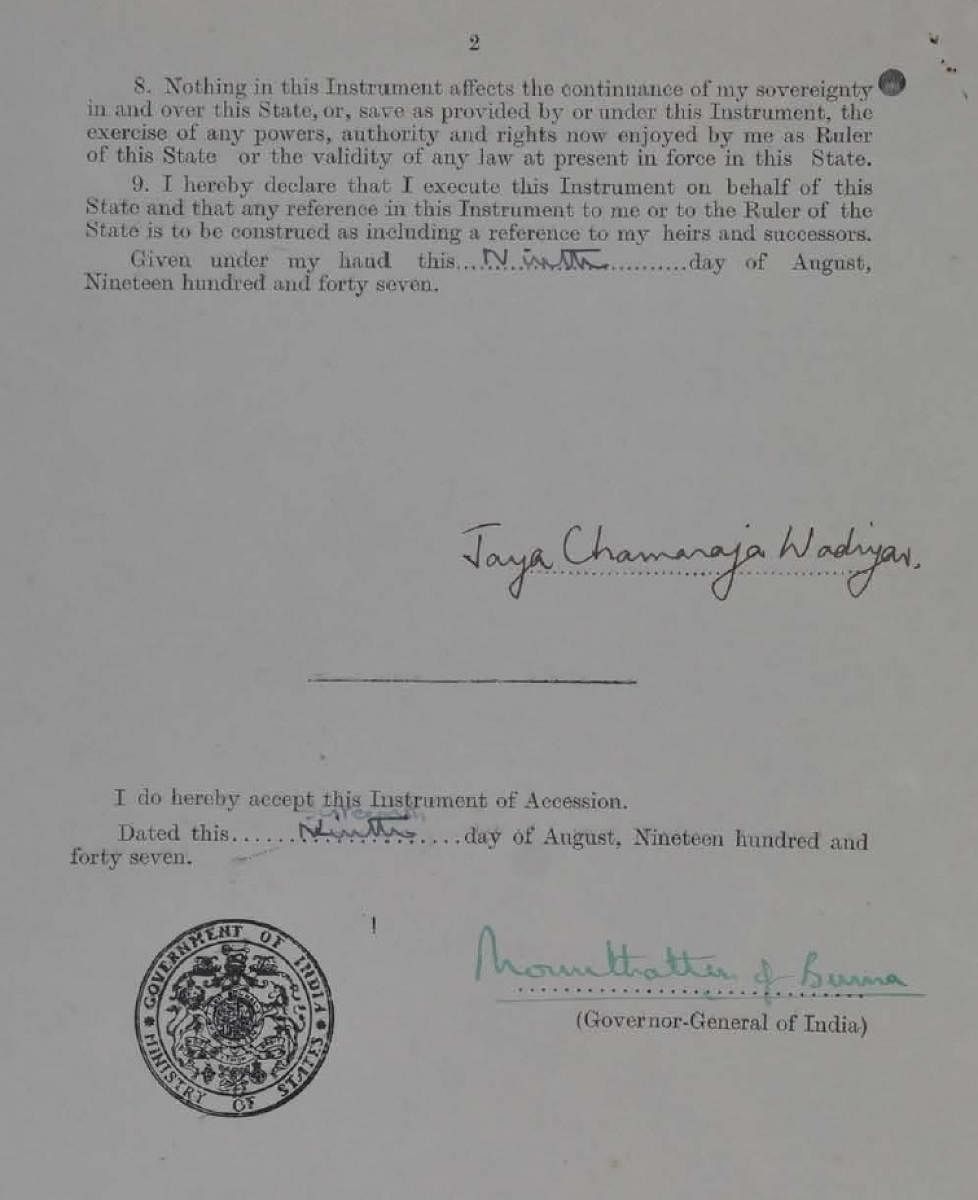

The celebration of India’s first Independence Day was muted in Mysore State.
While India gained Independence, the princely states had two options — to join the Indian Union or declare themselves independent.
Although Jayachamaraja Wadiyar, the last Maharaja of Mysore had signed the Instrument of Accession on August 9, 1947, even before India’s independence, he did not have clarity on the future course of action.
On its part, the Mysore State Congress demanded establishment of a ‘responsible’ government and thus the ‘Mysore Chalo’ satyagraha began, on September 1, 1947.
Kyasamballi Chengaluraya Reddy, who would go on to become the first Chief Minister of Mysuru, listed out the demands of the Satyagraha: proclamation of the formation of a democratically accountable government; formation of an interim ministry and establishment of a constitutional committee of around 25 persons for the drafting of a state constitution; and release of all political prisoners.
Over 40,000 people were witness to Reddy’s speech and the unfurling of the Indian Union flag at Subhash Nagar in Bengaluru. Reddy called upon the people to march to Mysore Palace. People from all nine districts (now 14) of Mysore, as well as supporters from outside the state, began marches towards Mysuru. On September 4, 1947, police arrested Reddy and other Congress leaders and caned the crowd.
Curfew in Mysuru
In response, the Maharaja’s government imposed curfew in cities, censored newspapers, and closed schools. On September 6, 1947, police opened fire at protesters attempting to break into the palace, killing one person. The government then clamped a 48-hour curfew on Mysuru city. The same day, police overcame crude roadblocks set up by protesters in Malleshwaram, at Bangalore, and opened fire at agitated crowds, killing two people.
On September 9, 1947, three people — Ramaswamy, Tooranayak and Ranga — were killed as police opened fire at agitators in Maharaja’s College and its surrounding areas in Mysuru.
Ramaswamy, a student of Hardwick High School, was on his way home, near Subbarayanakere, when he was caught in the crossfire at the intersection of Jhansi Lakshmi Bai Road and Chamaraja Double Road. Earlier known as five-light junction, it was renamed the Ramaswamy circle in his honour.
In all, 20 people were killed by police firing during Mysore Chalo.
On September 19, city police officers in Bangalore went on a strike in support of Mysore Chalo and marched from station to station, imploring their colleagues to join them.
On September 25, over 8,000 workers in two of Mysuru’s four gold mines stopped work. Protesters continued flooding Mysuru city. Finally, the Maharaja announced the establishment of a new government on October 24. Thus, Reddy was sworn in as chief minister on October 27, 1947.
He served as chief minister till 1952.